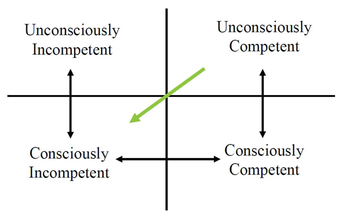September 2019 Newsletter
Our September Status Quo Breaker is...
Lisa Olson, Executive Secretary at Scavo High School, is being recognized as our September Status Quo Breaker! Lisa is establishing a central online team space for Scavo, engaging with staff and getting them all organized. In addition, she is ensuring appropriate use of resources through her attention to detail with her student fees and school budget. Great work, Lisa!
The Status Quo Breaker is a monthly traveling trophy recognition of an employee for their contribution to process improvement, to say thank you for being Lean and/or for helping make DMPS Leaner. Do you have someone you want to nominate for the Status Quo Breaker? Contact Emma Knapp.
Lisa Olson, Executive Secretary at Scavo High School, is being recognized as our September Status Quo Breaker! Lisa is establishing a central online team space for Scavo, engaging with staff and getting them all organized. In addition, she is ensuring appropriate use of resources through her attention to detail with her student fees and school budget. Great work, Lisa!
The Status Quo Breaker is a monthly traveling trophy recognition of an employee for their contribution to process improvement, to say thank you for being Lean and/or for helping make DMPS Leaner. Do you have someone you want to nominate for the Status Quo Breaker? Contact Emma Knapp.

Personal Efficiencies: Electronic Kanban Board
A Kanban board is a way to visualize your to do list as well as help you arrange and limit your work in progress. Action Boards are an example of a Kanban. Kanban boards can also be electronic, making it easier to access it from anywhere. One way to do this is using Microsoft OneNote. Find step by step directions here.
A Kanban board is a way to visualize your to do list as well as help you arrange and limit your work in progress. Action Boards are an example of a Kanban. Kanban boards can also be electronic, making it easier to access it from anywhere. One way to do this is using Microsoft OneNote. Find step by step directions here.

Competency Model: Why Change is Hard
The Competency Model demonstrates what happens as we are introduced to new ways of
thinking or doing. We often move people from Unconsciously Competent to Consciously Incompetent. This increases the pain of change. Let's explore this concept with the example of a little girl learning to tie her shoes.
Unconsciously Incompetent: She didn’t know how to tie her shoes, nor did she care. All of her
shoes were Velcro and slip-on. She was in shoe-tying bliss!
Consciously Incompetent: She still didn’t know how to tie her shoes, but now she was aware. This
is a really uncomfortable – sometimes painful – place to be. We’ve lost our identity and are fearful
of incompetence, punishment for incompetence, or not fitting in.
Consciously Competent: If she really focuses, and pays attention, and walks through each step –
then she can tie her shoes. It takes her a while to do it. And sometimes she has to try multiple
times before she gets it. But if she focuses, she can competently tie her shoes. This can be an
uncomfortable learning phase – now we’re trying to do it, but it feels like we’re “failing.”
Unconsciously Competent: Over time, and with practice, she will eventually become like all of us. She’ll be able to tie her shoes without even thinking about it. In fact, if she were to try to teach someone how to tie shoes, it would be difficult because she’s not even conscious of each of the steps anymore. She’s made it back to shoe-tying bliss!
Copyright: Process Plus Results Consulting Corporation
The Competency Model demonstrates what happens as we are introduced to new ways of
thinking or doing. We often move people from Unconsciously Competent to Consciously Incompetent. This increases the pain of change. Let's explore this concept with the example of a little girl learning to tie her shoes.
Unconsciously Incompetent: She didn’t know how to tie her shoes, nor did she care. All of her
shoes were Velcro and slip-on. She was in shoe-tying bliss!
Consciously Incompetent: She still didn’t know how to tie her shoes, but now she was aware. This
is a really uncomfortable – sometimes painful – place to be. We’ve lost our identity and are fearful
of incompetence, punishment for incompetence, or not fitting in.
Consciously Competent: If she really focuses, and pays attention, and walks through each step –
then she can tie her shoes. It takes her a while to do it. And sometimes she has to try multiple
times before she gets it. But if she focuses, she can competently tie her shoes. This can be an
uncomfortable learning phase – now we’re trying to do it, but it feels like we’re “failing.”
Unconsciously Competent: Over time, and with practice, she will eventually become like all of us. She’ll be able to tie her shoes without even thinking about it. In fact, if she were to try to teach someone how to tie shoes, it would be difficult because she’s not even conscious of each of the steps anymore. She’s made it back to shoe-tying bliss!
Copyright: Process Plus Results Consulting Corporation
Shout Outs!
Thank you April Murray for being the continuous improvement point person over the summer!
